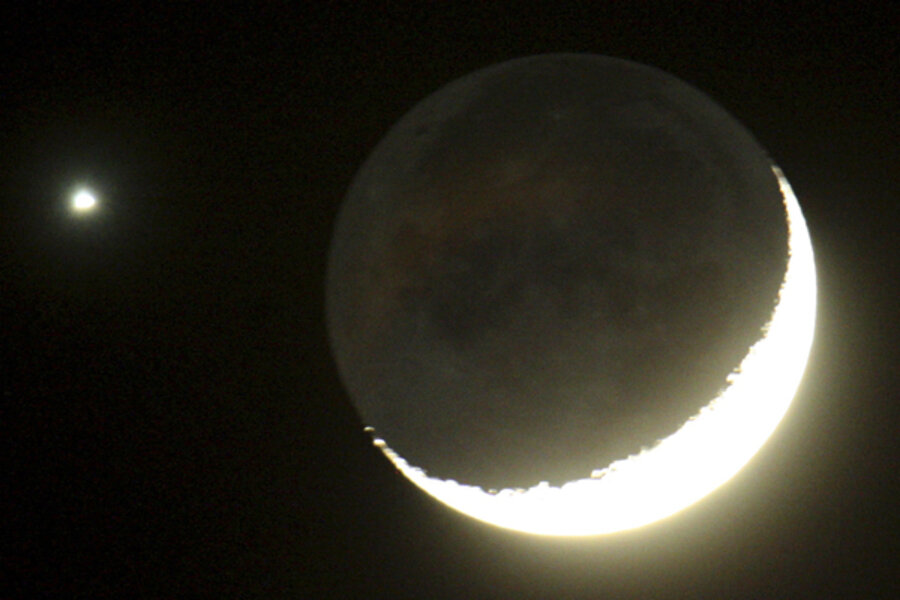Jupiter and the moon put on a show for Mother's Day
Loading...
If you're drawing a blank on a Mother's Day gift this year, why not give mom the planets? Jupiter and the moon will offer what promises to be a stunning dawn cosmic line-up on Sunday.
A good time to look for the gas giant Jupiter and the crescent moon will be around 5:30 a.m. local time, weather permitting, according to a NASA alert.
You don't even have to drag mom outside to see the astronomical show. A glance out any east-facing window with an unobstructed view of the sky should do, NASA said. This handy sky map shows where to look Sunday morning to see Jupiter and the moon.
Early-bird stargazers who do go outside with telescopes in tow should be able to see even more details of the moon's craters and Jupiter. With a small telescope, observers can discern the planet's four big moons – Io, Europa, Ganymede and Callisto – which are also known as the "Galilean satellites" since they were discovered by Galileo Galilee (using his own simple telescope) 400 years ago.
Jupiter and the moon will appear in what astronomers call a conjunction, when two or more objects appear near each other and have the same celestial longitude (on star maps) in the sky.
The two objects will be separated by about 5 degrees of arc in the sky. For comparison, a clenched fist held up at arm's length would cover about 10 degrees of arc in the sky.
Of course, some mothers may want to sleep in on the day dedicated to them. But that doesn't mean they completely miss out. Another planet and star will put in a follow-up performance at sunset, offering another attractive target, weather permitting.
Venus, the second planet from the sun, and the bright star Sirius will appear together about halfway up in the western sky. They won't appear as close together as Jupiter and the moon, but she will shine much brighter. [More Venus photos.]
Venus is the brightest planet in the night sky, while Sirius – also known as the "Dog Star" – is the brightest star, according to NASA's alert. Observers with a small telescope can reveal Sirius sparkling like a diamond with occasional rainbow-colored glints. Venus should appear as a pearly object in the sky.
If your mom gets confused over which bright object is Venus, just point to the steady, shining light. Stars twinkle in the sky (due to atmospheric interference) but brighter, closer planets offer a steady light.
For observers living in high latitudes on Earth, there may be yet another astronomical treat on Saturday offering a prelude to this year's Mother's Day sky sightings.
There is a 20 percent chance that a geomagnetic storm, created by solar wind particles hitting the Earth's magnetic field, may create stunning aurora displays, also known as the Northern Lights, according to the National Oceanic and Atmospheric Administration.





